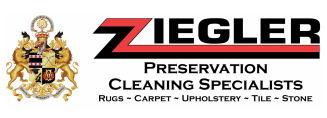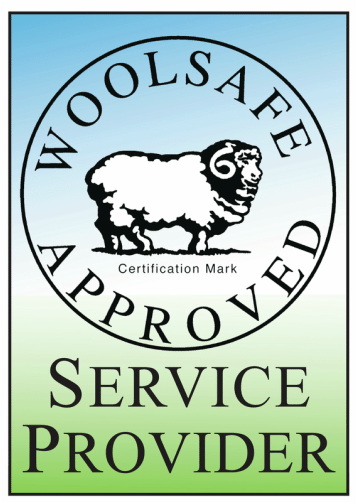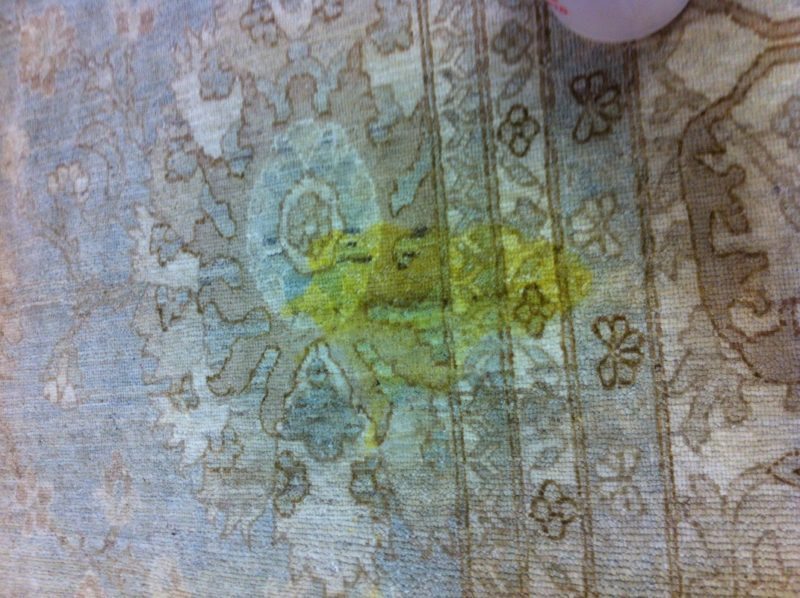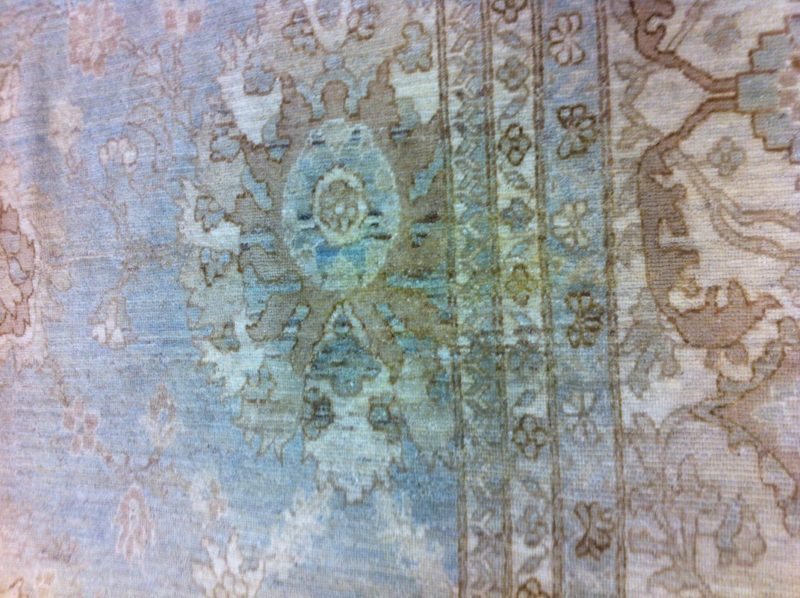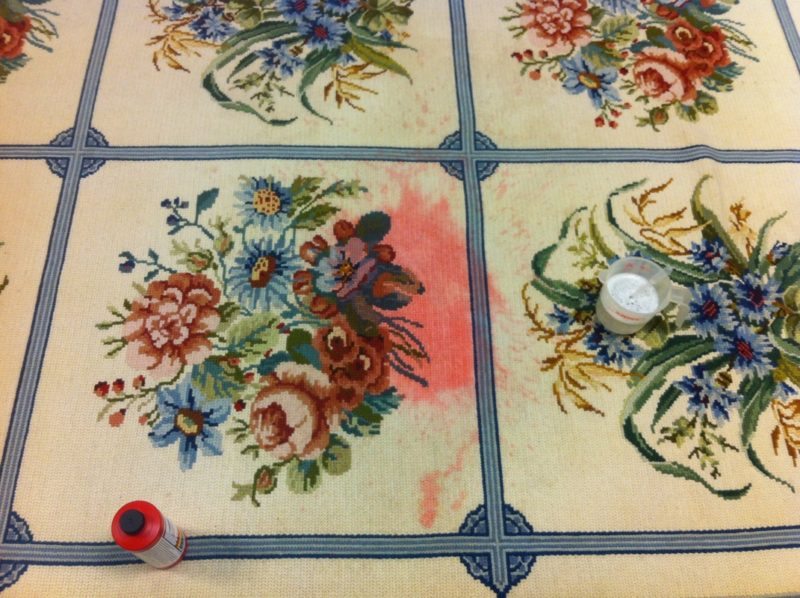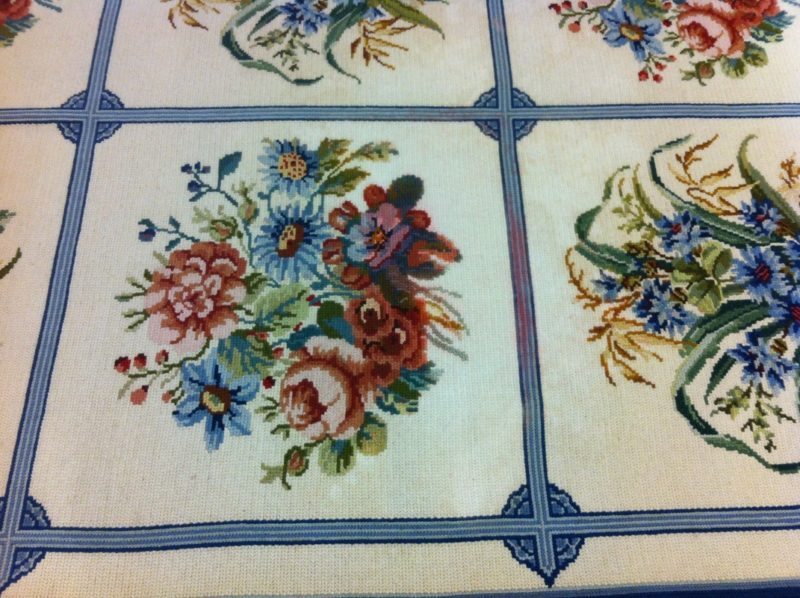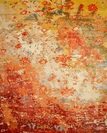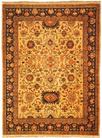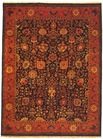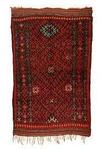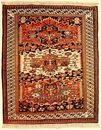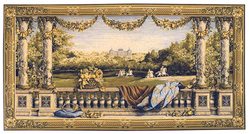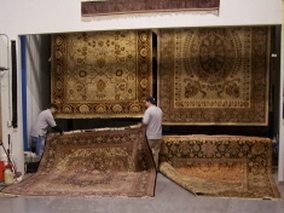Oriental & Area Rug Preservation Cleaning Specialists
Certified Rug Specialist
1 of only 63 in the United States
Connecticut Oriental & Area Rug Cleaning Specialists
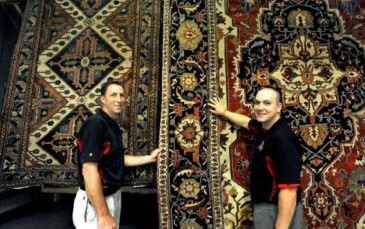
Cleaning & Repair of Hand Knotted Rugs
Proper, Safe Cleaning of Veg-ital Dyed, Antique Oriental Carpets and Specialty Area Rugs From Around the World
Contact Us Now
Ziegler’s has passed the stringent testing done by Woolsafe to insure that we use only approved procedures and approved solutions in the care of wool fiber rugs and fabrics.
The First Principle of Area Rug Cleaning is: It should not be done in the client’s home!
There are many different types of rugs, each with inherent problems when cleaning or washing them.Wool area rugs have a natural propensity to hide soil… vast amounts of soil. Going once over the top with a steam cleaner will make it look better… but it isn’t even close to being clean.
In fact, 90% of the allergens, sand, dirt, dust, dander, dust mites and their droppings are still in the rug! Having a rug cleaned in-home may at first seem monetarily beneficial, however that would be the only benefit. It is the wealth of knowledge in the minds of the Ziegler team that keeps your rug safe through the cleaning process.
We Can Pick-Up & Deliver Your Rugs
Bring Your Rugs To Our Plant And SAVE 10%!
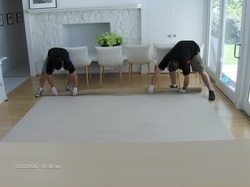
There are 3 Critical Pre-Cleaning Steps
Inspection ~ Dusting ~ Pre-Spotting
The Ziegler Oriental Care facility handles 200 to 300 rugs per month. The procedure used to navigate a rug through the cleaning process is just as important as the actual cleaning itself.
The most important of which is the inspection and check-in of a client’s rugs.
The inspection step is where and when all the critical information is recorded and a road map is set for the rug’s journey through our plant.
Inspection
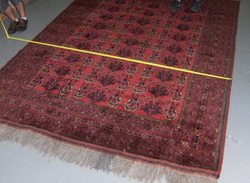
Upon arrival at our facility, a rug is rolled out, identified and measured.
The rug is then inspected for any pre-existing conditions or problems, which will then be discussed with the client. At this time, possible solutions are offered to the client i.e.; repairs, re-weaving or urine odor removal, shearing etc.
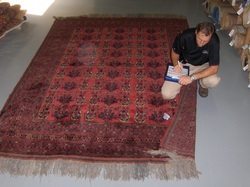
We will then note any concerns that the client may have regarding spots or stains, and discuss the likelihood of removal.Different cleaning options are also discussed and priced, as are other beneficial treatments that are available like moth repel, sanitizing or MicroSeal Sun Fade & Stain Protection.
Dusting… Or Dry Washing
For Truly Healthy Cleaning –
This Singularly, Is The Most Important Step!
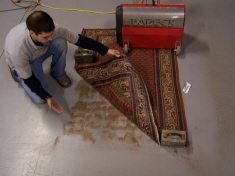
Wool fibers are constructed in such a way that they naturally hide soil.Synthetic fibers have been engineered to duplicate a wool fiber’s soil hiding capabilities.
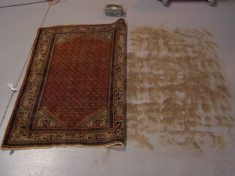
Consistent professional cleaning every 2 to 5 years keeps this concentration from building up.Hoover Vacuum Company states “a 9 x 12 rug can hold 90 lbs of dirt… and still look clean on its surface!”
MUST SEE… Dusting Pictures of Typical Area Rugs
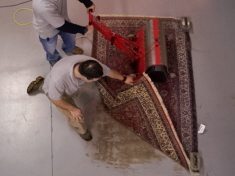
The most commonly overlooked pre-cleaning step is proper dry soil removal or “Dusting.”This deeply embedded soil cuts at the fibers of the rug and causes premature wear.
The soil is also a food supply for allergens like dust mites, bacteria, fungus and destructive insects like moths… moths love a dirty rug.
There Are Three Primary Tools For
Dry Particulate Removal That We Use
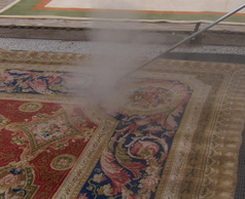
Dusting Dry Wash (pictured above)Vacuuming
Air Washing (pictured left)
Each rug is assessed as to which method will be used for the dusting process. Most rugs receive the full three-step treatment, however delicate, old or threadbare pieces are mainly air washed only.
The Dry Wash Duster “RugBadger” produces 40,000 harmonic vibrations per minute, it is hand guided over the back of the rug which is placed up-side down. The gentle vibrations dislodges stubborn soil and contaminants causing them to fall free of the rug.
The rug will then be vacuumed on both sides (front and back).
These two processes remove the bulk of the larger particulate such as sand, grit and some finer debris.
Finally, the rug is air washed front and back. A specially designed attachment forces air through or across the rug, blowing out finer silt-like fragments of soil.
As you can see, these dry soil removal processes cannot be done in your living room.
Call or Contact Ziegler Today
Pre-Spotting
The Goal Is, To Remove A Stain Without Harming The Rug.
Having All The Spotting Agents And Knowing When To Use Them And When Not To, Is Really What Makes A Specialist A Specialist.
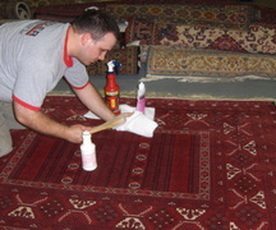 Although many know it as pre-spotting, spots are removed throughout the cleaning process.
Although many know it as pre-spotting, spots are removed throughout the cleaning process.
Certain spots such as ink, grease, and wax are treated before cleaning, while others are removed during and after cleaning.Knowing what the spot or stain is, can be extremely helpful in the attempted removal.Pre-conditioning agents are also used prior to cleaning to break the bond of sticky oils that accumulate in rugs from such things as cooking, heating and pets, just to name a few.
Things to remember:
- Spot – Is a material that has the possibility of removal.
- Stain – Is a substance containing a dye or pigment and can be permanent.
- A spot that is lighter than the rest of the rug is most likely color loss.
There are special spotting techniques and chemicals available, but in most cases they are risky to use and therefore they will not be used without the client’s written consent.
